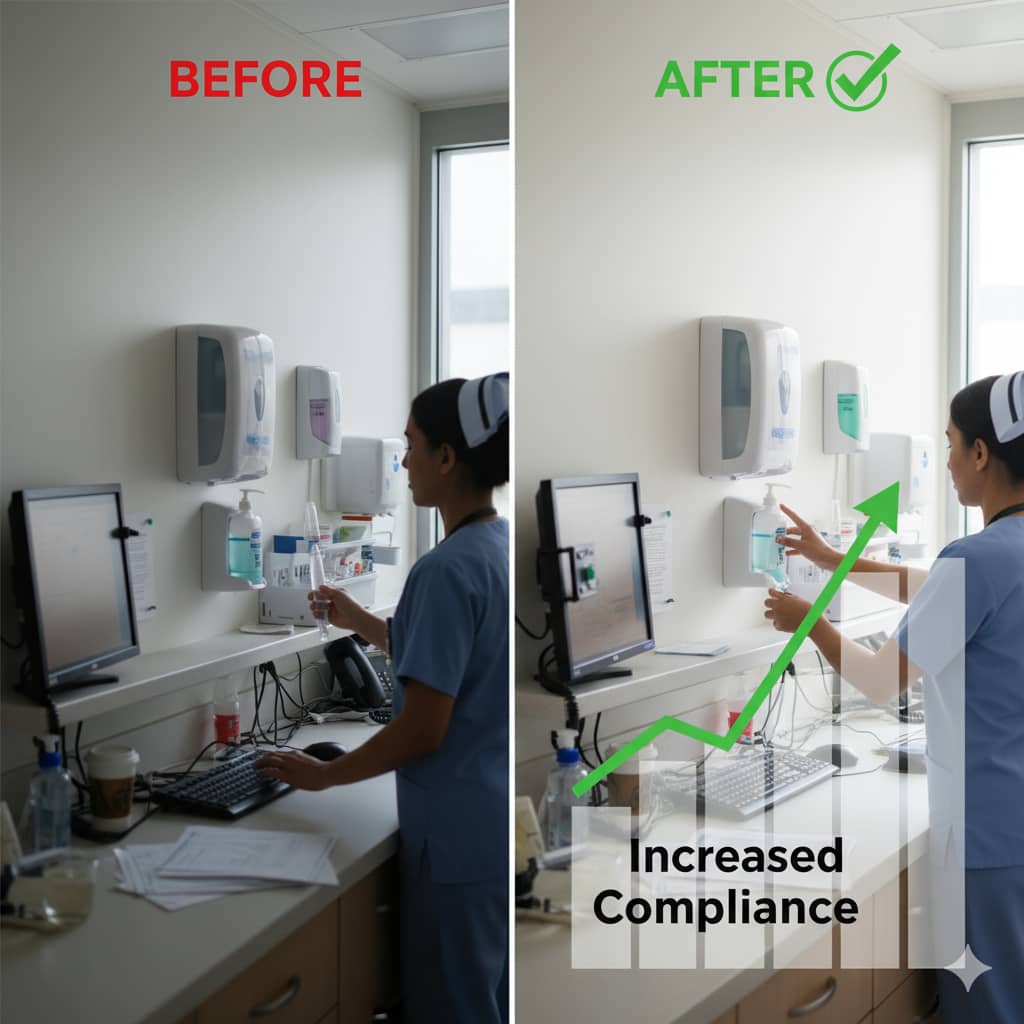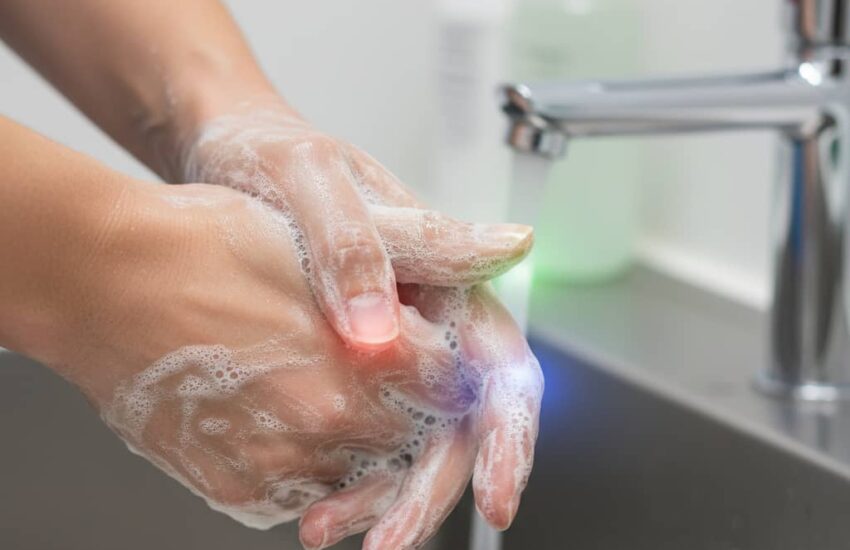Proper hand hygiene is the simplest yet most powerful defense against infections in nursing homes and home care. Discover techniques, timing, and tools that protect vulnerable seniors. There’s a moment I’ll never forget from my grandmother’s final hospitalization, not a dramatic medical intervention, but something far simpler. A young nurse entered the room, performed what appeared to be a ritualistic dance of cleaning her hands, touching surfaces, then cleaning them again. When I asked about the precise routine, she explained: “Your grandmother’s immune system is like a newborn’s now. My hands could be what stands between her and a fatal infection.” That conversation transformed how I viewed the humble act of handwashing, from a basic hygiene practice to a vital medical intervention, especially for our most vulnerable populations.
Hand hygiene represents the most fundamental yet frequently overlooked component of infection control in both institutional and home care settings. The Centers for Disease Control estimates that proper hand hygiene could prevent up to 50% of healthcare-associated infections, a staggering statistic when considering that infections rank among the leading causes of hospitalization and mortality in senior populations. What makes this practice particularly crucial for older adults is their often-compromised immune systems, a condition known as immunosenescence, where the body’s defenses naturally weaken with age.
The science behind hand hygiene reveals why it’s so effective. Our hands routinely collect pathogens from surfaces, people, and our own bodies. For healthy individuals, these microorganisms might cause minor issues, but for seniors—especially those with chronic conditions like diabetes, COPD, or heart disease, they can trigger cascading health crises. A simple norovirus that might mean a day of discomfort for a younger person could lead to fatal dehydration in a frail elder. The mechanical action of proper handwashing, when performed correctly, physically removes up to 99.9% of transient microorganisms that cause these infections.
Technique matters far more than most people realize. The World Health Organization’s “Five Moments for Hand Hygiene” framework provides crucial guidance for care settings: before touching a patient, before clean procedures, after body fluid exposure, after touching a patient, and after touching patient surroundings. In home environments, this translates to washing before preparing food or medication, after using the bathroom or changing briefs, and after handling soiled linens or medical equipment. The actual washing process should follow a specific protocol: wetting hands, applying soap, scrubbing for at least 20 seconds (including often-missed areas like thumbs, knuckles, and under nails), rinsing thoroughly, and drying completely.
The choice between soap and water versus alcohol-based sanitizers depends on the situation. Soap and water remain essential when hands are visibly soiled, after using the restroom, or when dealing with certain pathogens like C. difficile. Alcohol-based rubs (containing 60-95% alcohol) are more effective against many viruses and bacteria when hands aren’t visibly dirty and are often more practical for frequent use. In nursing homes, strategic placement of sanitizer dispensers at room entrances, dining areas, and medication stations significantly increases compliance.
The challenges in care environments are both practical and human. Arthritis, tremors, or cognitive impairment can make thorough hand cleaning difficult for seniors themselves. Caregivers may skip proper hygiene when rushed or between multiple tasks. I’ve observed well-meaning staff move directly from handling soiled linens to assisting with meals without proper hand cleaning, not from negligence but from the cognitive overload common in understaffed environments.
Skin integrity presents another often-overlooked consideration. Frequent washing, especially with harsh soaps, can damage skin—creating micro-abrasions that actually harbor more pathogens. The solution involves using pH-balanced, moisturizing cleansers and regularly applying alcohol-free lotions to maintain healthy skin barriers. In one nursing home, switching to gentler products reduced staff dermatitis by 70% while improving hygiene compliance.

Environmental factors significantly influence hand hygiene effectiveness. Damp or poorly maintained soap dispensers can become bacterial breeding grounds. Shared towels spread pathogens between users. Air dryers that aren’t properly maintained can blow contaminants back onto hands. The most effective facilities use single-use towels, maintain equipment meticulously, and monitor soap and sanitizer quality regularly.
Education and culture determine success more than any policy. Facilities that make hand hygiene a visible priority, with clear signage, regular training, and leadership modeling, see significantly higher compliance rates. One innovative nursing home created a “hand hygiene champion” program where residents themselves gently reminded staff and visitors to clean their hands, transforming compliance from a staff obligation to a community value.
In home settings, the challenges differ but are equally important. Family caregivers juggling multiple responsibilities may forget their own hygiene while focusing on their loved one’s needs. Simple strategies like placing hand sanitizer pumps in every room, keeping travel-sized bottles in aprons or pockets, and establishing “clean hand zones” (like kitchen and medication areas) can build protective habits.
The psychological aspect of hand hygiene shouldn’t be underestimated. For homebound seniors, seeing caregivers consistently practice good hand hygiene provides reassurance about their safety. In one study, patients who observed healthcare workers cleaning their hands reported higher satisfaction and perceived quality of care—even when clinical outcomes were identical.
Technology offers promising advances in hand hygiene monitoring. Smart dispensers that track usage patterns, wearable reminders that prompt cleaning at appropriate intervals, and UV monitoring systems that reveal missed areas are becoming more common in institutional settings. While these technologies can’t replace cultural commitment, they provide valuable data for improving practices.
The consequences of poor hand hygiene extend beyond individual health. Infections in nursing homes can quickly become outbreaks, requiring quarantine measures that isolate vulnerable residents from loved ones. Antibiotic-resistant infections, often spread through inadequate hygiene—limit treatment options and increase mortality risks. The financial costs are equally substantial, with a single healthcare-associated infection adding thousands of dollars in treatment expenses.
Perhaps the most compelling argument for rigorous hand hygiene comes from understanding the chain of transmission. A caregiver’s unwashed hands after helping one resident can transfer pathogens to surfaces, equipment, and other residents, creating invisible networks of potential infection. Breaking just one link in this chain through proper hand cleaning can prevent dozens of secondary infections.
Hand hygiene represents a rare convergence of simplicity and power in healthcare. It requires no sophisticated technology, no expensive medications, and no specialized training—yet it remains one of our most effective defenses against disease. In both nursing homes and private residences, this fundamental practice creates an invisible shield around our most vulnerable, proving that sometimes the simplest solutions are also the most profound.
References
World Health Organization. (2012, May 4). WHO highlights importance of good hand hygiene for patient safety. Retrieved from https://www.who.int/news/item/05-05-2012-who-highlights-importance-of-good-hand-hygiene-for-patient-safety
World Health Organization. (2022, May 22). Hand hygiene. Retrieved from https://www.who.int/teams/integrated-health-services/infection-prevention-control/hand-hygiene
Larson, E. (2023, July 30). Hand hygiene. *StatPearls*. Retrieved from https://www.ncbi.nlm.nih.gov/books/NBK470254/
Public Health Agency of Canada. (2014, September 4). Hand hygiene practices in healthcare settings. Retrieved from https://www.canada.ca/en/public-health/services/infectious-diseases/nosocomial-occupational-infections/hand-hygiene-practices-healthcare-settings.html
Centers for Disease Control and Prevention. (2024, June 10). About hand hygiene for patients in healthcare settings. Retrieved from https://www.cdc.gov/clean-hands/about/hand-hygiene-for-healthcare.html

